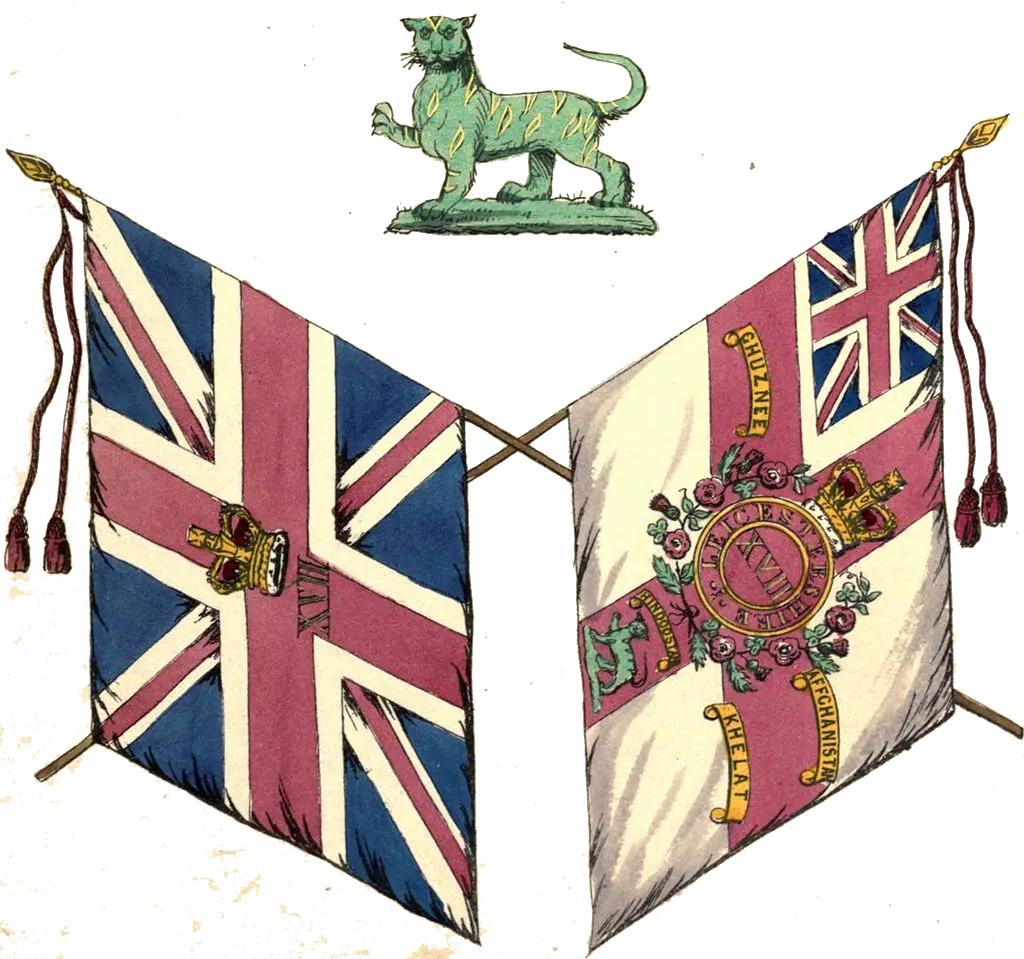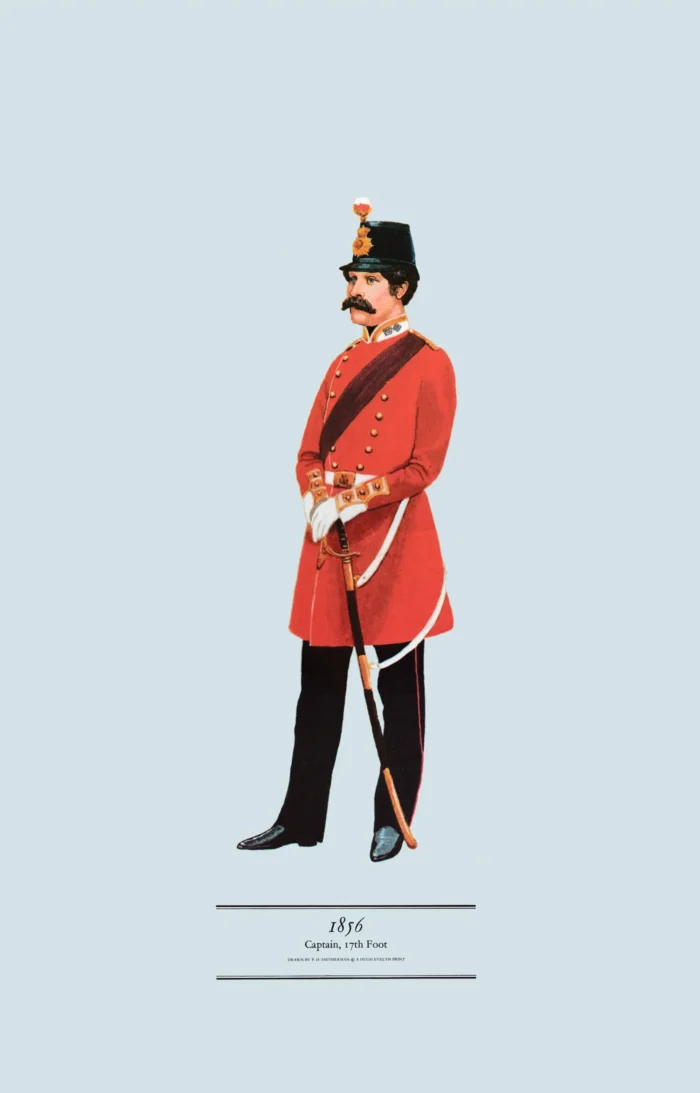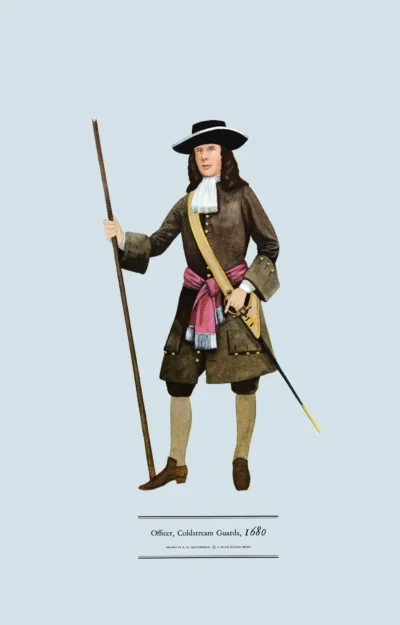Captain, 17th Foot, 1856 (Leicestershire Regiment)
£0.00
Raised 1688; in 1881 became Leicestershire Regiment, in 1964 merged to form Royal Anglian Regiment – R ANGLIAN (scroll down for a more detailed Description)
SOLD OUT NO MORE STOCK
Published 1970 by © Hugh Evelyn Limited; drawn by Colonel Philip Henry Smitherman (1910-1982), Royal Corps of Signals
Size: c. 24.5 x 37.5 cm [9 ½ ″ x 14 ½ ″] (may vary slightly from printers’ cut 50 years ago)
Printed on on medium cardstock weighing 144 g/sm2 faced in light greyish blue (RGB c. d4e1e8)
Print is STANDARD size – shipping is the same for 1 to 10 prints (based on largest print size in your order) – see Shipping & Returns.
Out of stock
Description
The 17th Foot was raised in 1688 as Colonel Solomon Richard’s Regiment of Foot. Titled 17th in 1751, the title Leicestershire was added in 1782. In 1881, it became The Leicestershire Regiment and in 1946 became The Royal Leicestershire Regiment. In 1964 it was merged with 3 other regiments to form The Royal Anglian Regiment of which B Company of the 2nd Battalion continues the regimental succession.


The Royal Tiger of India, a green tiger with gold stripes, was granted to the regiment in commemoration of its distinguished service in India at the beginning of the 19th century. The Royal Anglian Regiment (R ANGLIAN) is an infantry regiment of the British Army. It consists of two Regular battalions and one Reserve battalion. The modern regiment was formed in 1964, making it the oldest of the Line Regiments now operating in the British Army, and can trace its history back to 1685. The regiment was the first of the large infantry regiments and is one of the three regiments of the Queen’s Division.
The short coat with heavy epaulettes and tails, proved quite unsuitable for active service in the Crimea, and early during the war it was abolished for the infantry and replaced by the tunic shown here, a garment like the frock coat worn in civilian dress at this time. It was long in the skirt presumably for warmth, had no epaulettes, and instead of the high tight collar of the coatee, had a low one cut away in front, the V-shaped opening being filled with a black stock. The double-breasted front of the coatee was retained. The crimson sash, denoting an officer on duty, was moved from the waist to the left shoulder. Majors and above had their badges in gold, captains and below in silver, colonels and captains wearing a crown and star, lieutenant-colonels and lieutenants a crown, and majors and ensigns or second-lieutenants a star. Field officers also wore more lace on their collars and, later, on their cuffs as well. The shako was similar in shape to its predecessor, but was slightly lower in the crown, and slightly more practical. It was covered, for officers, in blue velvet. In the Crimea, however, it was little worn.
Additional information
| Weight | 0.0131 kg |
|---|---|
| Dimensions | 23 × 37 cm |




